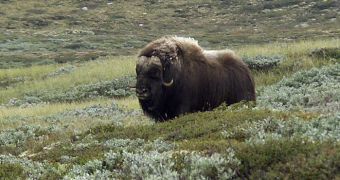According to a new scientific investigation, it would appear that the levels of carbon dioxide (CO2) currently in Earth's atmosphere are enough to cause the world to reach a tipping point beyond which the effects of global warming and climate change can no longer be accounted for.
Until now, various climate models have revealed that the tipping point moment is still years, maybe decades away. But the new analysis shows that the point may be closer than anyone believes.
The difference in timing that occurs between this study and others stems from the way scientists report themselves to the Arctic climate system. The team that conducted the recent investigation has discovered that this particular system is more prone to influences from global warming than thought.
This discovery has major implications, scientists say, because it forces climate models to be in such a manner that they take into account a faster-changing Arctic. The area holds great importance for regulating the climate patterns for the rest of the world.
An international team of experts conducted the new investigation, which was led by experts at the University of Colorado in Boulder (UCB), Daily Galaxy reports. The researchers analyzed climate records obtained from the Ellesmere Island in the High Arctic.
Between 2.6 to 5.3 million years ago, during the Pliocene Epoch, mean annual temperatures on this island were 34 degrees Fahrenheit (19 degrees Celsius) higher than today. But CO2 concentrations were only slightly more elevated than they are now.
“Our findings indicate that CO2 levels of approximately 400 parts per million are sufficient to produce mean annual temperatures in the High Arctic of approximately 0 degrees Celsius (32 degrees F),” explains UCB expert Ashley Ballantyne.
“As temperatures approach 0 degrees Celsius, it becomes exceedingly difficult to maintain permanent sea and glacial ice in the Arctic,” adds the expert, who holds an appointment at the UCB Geological Sciences Department.
“Thus current levels of CO2 in the atmosphere of approximately 390 parts per million may be approaching a tipping point for irreversible ice-free conditions in the Arctic,” he goes on to say.
Over the past 20 years, the average temperature in the Arctic has risen by more than 1.8 degrees Fahrenheit, or 1 degree Celsius, in response to anthropogenic (human-induced) global warming.
“Our findings are somewhat disconcerting regarding the temperatures and greenhouse gas levels during the Pliocene,” explains the curator of fossil vertebrates at the University of Colorado Museum of Natural History, Jaelyn Eberle.
“We already are seeing evidence of both mammals and birds moving northward as the climate warms, and I can't help but wonder if the Arctic is headed toward conditions similar to those that existed during the Pliocene,” the expert concludes.

 14 DAY TRIAL //
14 DAY TRIAL //